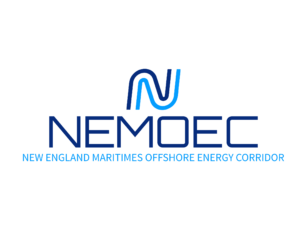The Coalition for a New England – Maritimes Offshore Energy Corridor
The proposed New England – Maritimes Offshore Energy Corridor (NEMOEC) is a shared offshore backbone transmission corridor that directly connects US and Canadian offshore wind (OSW) resources to population centers and industrial users at the coasts. Our vision for transformative interregional electricity infrastructure will make a cleaner and more resilient regional grid while minimizing stakeholder impacts and helping both regions meet their renewable energy needs.




